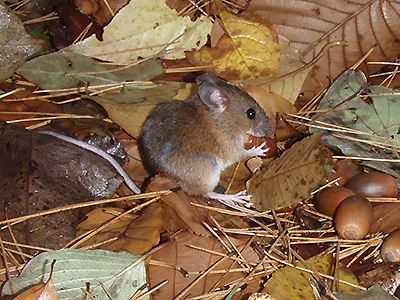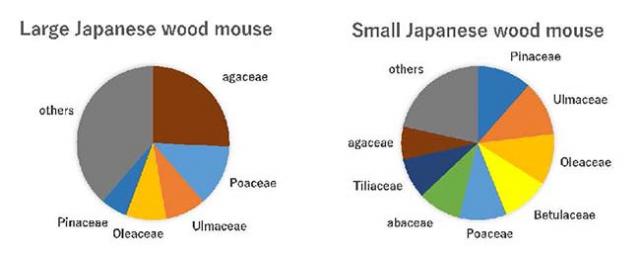Home > Research > Research Results > Research Results 2018 > Small feces reveal differences in the feeding habits of two sympatric wood mice species
Update:September 28, 2018
Main content starts here.
Small feces reveal differences in the feeding habits of two sympatric wood mice species
| Article title |
Dietary niche partitioning between sympatric wood mouse species (Muridae: Apodemus) revealed by DNA meta-barcoding analysis |
|---|---|
| Author (affiliation) |
Jun J. Sato (a), Takuya Shimada (b), Daisuke Kyogoku (c), Taketo Komura (c), Shigeru Uemura (d), Takashi Saitoh (e), Yuji Isagi (c) (a) Fukuyama University, Fukuyama, Hiroshima, Japan. (c) Kyoto University, Kyoto, Japan. (d) Hokkaido University, Nayoro, Hokkaido, Japan. (e) Hokkaido University, Sapporo, Hokkaido, Japan. |
| Publication Journal |
Journal of Mammalogy, 99(4), 952-964, August 2018, DOI:10.1093/jmammal/gyy063( External link ) |
| Content introduction |
Large Japanese wood mouse and small Japanese wood mouse are endemic mice inhabiting forests across Japan. They contribute to the maintenance of forest ecosystems through playing various roles in helping forest alternation of generations by storing seeds and supporting the bottom of the food web by falling prey to various animals. It remains unknown as to how these two different mice, which are closely related and sympatric species, use limited forest resources differently to avoid competition. In addition, although feeding habits of mice have been studied through microscopic observations of food residues found in feces, this method has a limitation because feces are extremely small, similar to rice grains. Therefore, we analyzed DNA of plants in their feces to determine the plants consumed by these two species of mice. Results revealed that while large Japanese wood mice consume mainly Fagaceae plants, which produce acorns, small Japanese wood mice eat various plants, including tree species that large Japanese wood mice do not consume. The method used in this study can be considered excellent as it can be applied to all mammalian species whose feeding behavior is difficult to directly observe because of their nocturnal nature. In addition, the findings from this study provide a vital clue for understanding how biodiversity in forests is maintained.
Photograph 2: A small Japanese wood mouse climbing a tree
Figure 1: Differences observed in the composition of plants detected in feces of large Japanese wood mice and small Japanese wood mice (total from spring to autumn). Plants are shown by families. |
Copyright © Forest Research and Management Organization. All rights reserved.



